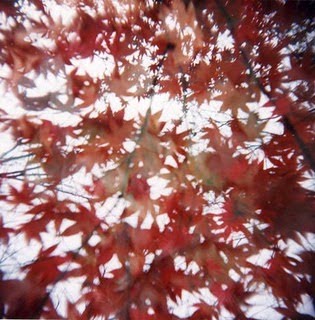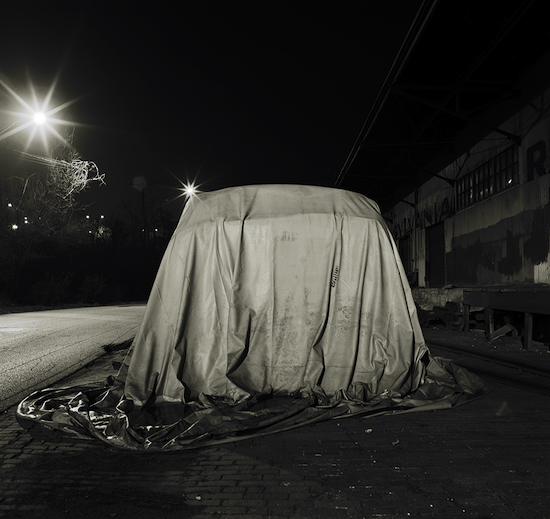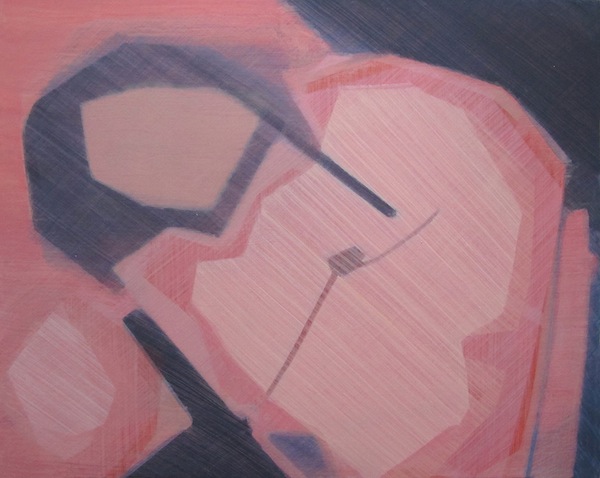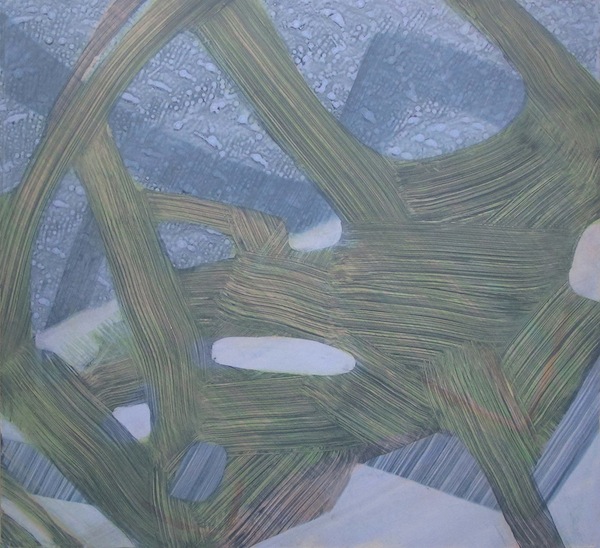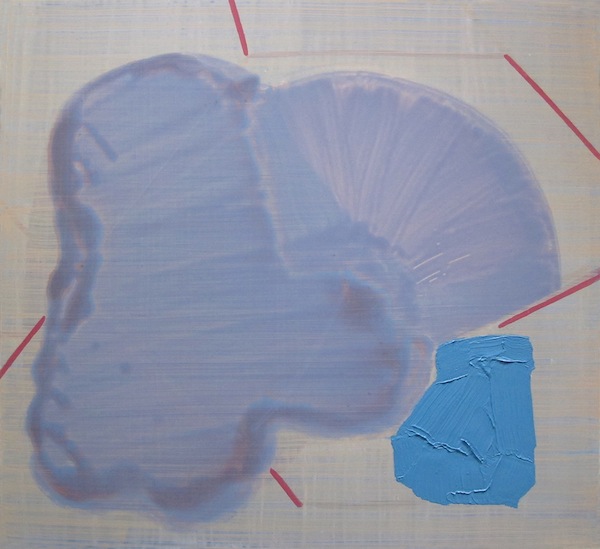Jan Razauskas’ drawings, paintings and interdisciplinary work have been exhibited widely, and recognized through granting sources including the Maryland State Arts Council, the Contemporary Museum in Baltimore, and the Santa Fe Art Institute. Her work has appeared in New American Paintings and been reviewed in numerous publications including Art Papers. Razauskas currently teaches as an adjunct professor. She lives and works in Baltimore.
Cara Ober: Your solo show, The Builder’s Handbook, is currently on display at The John Fonda Gallery at Theatre Project through November 17. I am very curious about the title of the show – where does it come from? What does it mean to you?
Jan Razauskas: It’s an invented phrase. I was thinking about the idea of “building” and how it implies a solid, methodical approach to making something, and how impossible it would be to have a handbook to follow for making images. That even if you follow a procedural, your result would be singular and specific to your touch and temperament and perception. So it’s a little joke about the prospect of something existing that couldn’t exist, but at the same time questing after it.
CO: You are showing abstract paintings which allude to the act of painting, with multiple layers of marks and formal arrangements of line, color, and shape. Are these paintings made in reference to anything from the natural world or from visual perception? Or, are they completely from your imagination?
JR: I don’t plan them beforehand; they come through the painting process. Each work starts with a slight idea about a color, and that is the first thing painted, even though it may change radically or disappear from the painting. And then subsequent layers or additions are in response to the layers that came before. Sometimes that means subverting the whole thing, and ending up in a very different place.
Every time you add something to a painting there can also be a losing factor, a loss of something that gets covered over by that addition. I let a lot of what came before remain visible in the painting; things that happened at another point, and so are pinned in that layer or area. Or some things that are very recent in the painting will collide with very early parts. So there is an interest in time in the painting, for me, a duration that runs through the strata of the painting.
I also have a long-standing interest in the indicative nature of things, of materials, media, objects, situations. Starting several years ago, I did some drawings that were inspired in part by the writings on Being and Event by the French philosopher Alain Badiou. The drawings posed that an ephemeral idea or situation is perceivable through trace evidence, and could be made visible. The drawings were made with raw pigments suspended in a pool of solution, that I then drew a kind of schematic drawing on top of, charting the pigments’ “nature” and distribution as they clustered into nebulous forms. Eventually the drawings led to the paintings.
CO: What does working abstractly allow you to do – or think differently – as an artist? What are you thinking about when you paint?
JR: I started working abstractly because I felt like I could work more directly with the possibilities of material trace of the paint itself, and in the way I handled the paint and applied it, without also thinking about making the paint refer to something else, or by looking like something else. So I can work in a state of “present time”. I can notice what is happening in the painting and respond, on a visual and physical level of thought, without the verbal naming of things entering into it.
CO: You work with layers of acrylic on aluminum, which is an unusual surface to paint on. Where do you get the aluminum? How do you present it? How does this slick surface affect the quality of the paints you use? How is it different than canvas or wood?
JR: I love working on something smooth like aluminum because everything stays on the surface, a whole history of what happened in the painting. And on an impervious surface every mark is “physical”, the paint sits on top of the surface as a very thin dimensional form. Each subsequent layer of paint must go around, over or through the previous layers, so they are figuratively and literally in response to what came before. Some areas are made with impromptu systems that I invent for just one painting. Other areas have so many layers that I can feel the next layer sink into the slight grooves of the previous layers as I paint it. Ultimately, it builds a reality that’s unique to the image.
I buy the aluminum from an industrial supplier, precoated with a supersmooth finish. I use Velcro to attach it to the wall.
CO: What tools and types of paints do you use? What are your favorites?
JR: I use a big variety of brushes, and heavy body acrylics with some medium to keep it wet longer. Nothing fancy, I might use some commonplace objects if it occurs to me at the time – string, a dropper, a brush end.
CO: Who are your favorite artists to look at for inspiration? Who inspires you?
JR: So many good people out there – Pierre Huyghe always has some time-based project to think about, Wilhelm Sasnel for his transitions back and forth from representational to abstract painted space. Tomma Abts for the idiosyncratic ways she puts space in the painting. Gelitin for their intersections of art and culture.
